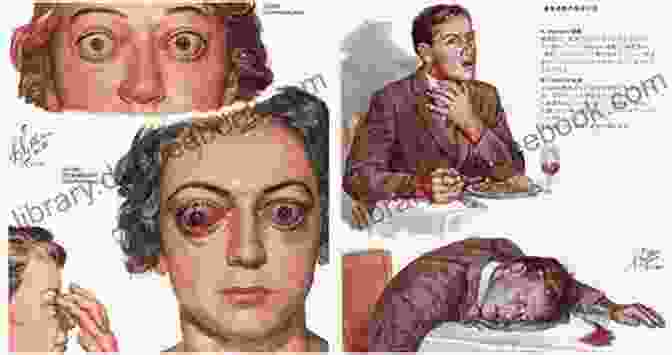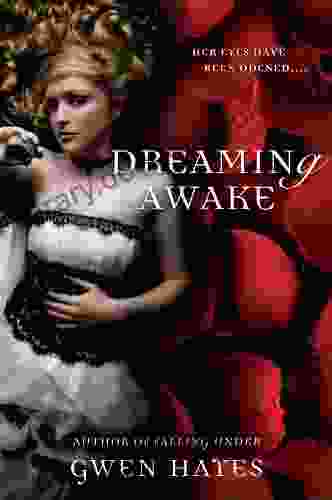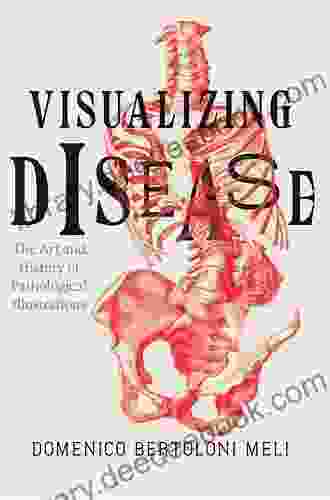The Art and History of Pathological Illustrations: Revealing the Hidden Realm of Disease


Pathological illustrations are a fascinating and often overlooked genre of medical art that provide a unique window into the history of disease and its impact on the human body. From the earliest anatomical sketches to the meticulously detailed images of modern medicine, these illustrations have played a crucial role in documenting, understanding, and treating illnesses. In this article, we will explore the art and history of pathological illustrations, tracing their evolution and examining the ways in which they have shaped our understanding of disease.
5 out of 5
| Language | : | English |
| File size | : | 25382 KB |
| Text-to-Speech | : | Enabled |
| Screen Reader | : | Supported |
| Enhanced typesetting | : | Enabled |
| Word Wise | : | Enabled |
| Print length | : | 288 pages |
| Lending | : | Enabled |
The Origins of Pathological Illustrations: A Journey Through Time
The earliest known pathological illustrations can be traced back to ancient Egypt, where they were used to document diseases in papyrus scrolls. These simple drawings often depicted the external manifestations of disease, such as skin lesions and tumors. As medical knowledge expanded, so too did the sophistication of pathological illustrations. In the Middle Ages, European scholars began to use illustrations to depict the internal organs and their diseases. These illustrations were often based on dissections and autopsies, and they provided a more detailed understanding of the human body and its pathologies.

The Renaissance: A Golden Age for Medical Illustration
The Renaissance marked a turning point in the history of pathological illustrations. During this period, artists and scientists collaborated to create highly accurate and detailed images of the human body and its diseases. One of the most famous examples is the "Vesalius Fabrica" by Andreas Vesalius, published in 1543. This groundbreaking work contained over 600 illustrations that revolutionized the study of human anatomy. Vesalius's illustrations were so accurate that they are still used in medical textbooks today.

The 19th Century: The Rise of Scientific Illustration
The 19th century witnessed a surge in scientific discoveries and advancements, which led to a corresponding increase in the production of pathological illustrations. During this period, medical illustrators began to use new techniques to create more realistic and detailed images. One of the most important developments was the use of lithography, a printing process that allowed for the mass production of high-quality illustrations. This made it possible to distribute pathological illustrations to a wider audience, including medical students, practitioners, and the general public.

The 20th and 21st Centuries: From Traditional to Digital
The 20th and 21st centuries have seen continued advancements in medical illustration technology. In the early 20th century, photography began to be used to document pathological specimens and disease processes. This led to the development of photomicrography, which allows for the visualization of microscopic structures. In recent decades, digital technologies have revolutionized the field of medical illustration. Computer-generated images and 3D visualizations are now widely used to create accurate and detailed representations of disease.

The Role of Pathological Illustrations in Medical Education and Research
Pathological illustrations have played a vital role in medical education and research for centuries. They provide a visual representation of disease processes that can be difficult to understand through text alone. By examining pathological illustrations, medical students and practitioners can gain a deeper understanding of the causes, symptoms, and progression of different diseases. Pathological illustrations are also essential for research purposes, as they can help scientists to visualize and compare different disease processes.
The Artistic Value of Pathological Illustrations
In addition to their scientific value, pathological illustrations can also be appreciated as works of art. The detailed and often graphic depictions of disease can be both beautiful and haunting. Some pathological illustrations are so well-executed that they have been featured in art exhibitions and museums.

The Future of Pathological Illustrations
As medical technology continues to advance, so too will the field of pathological illustrations. New imaging techniques and digital technologies are constantly being developed, which will allow medical illustrators to create even more accurate and detailed representations of disease processes. The future of pathological illustrations is bright, as they will continue to play a vital role in medical education, research, and patient care.
Pathological illustrations are a fascinating and multifaceted genre of art that offer a unique window into the history of disease and its impact on the human body. From the earliest anatomical sketches to the meticulously detailed images of modern medicine, these illustrations have played a crucial role in documenting, understanding, and treating illnesses. Whether viewed as scientific tools, works of art, or a combination of both, pathological illustrations are a testament to the human fascination with disease and our relentless pursuit of knowledge. As medical technology and understanding continue to evolve, so too will the field of pathological illustrations, ensuring their continued relevance and importance in the years to come.
5 out of 5
| Language | : | English |
| File size | : | 25382 KB |
| Text-to-Speech | : | Enabled |
| Screen Reader | : | Supported |
| Enhanced typesetting | : | Enabled |
| Word Wise | : | Enabled |
| Print length | : | 288 pages |
| Lending | : | Enabled |
Do you want to contribute by writing guest posts on this blog?
Please contact us and send us a resume of previous articles that you have written.
 Book
Book Novel
Novel Chapter
Chapter Text
Text Story
Story Genre
Genre Library
Library Magazine
Magazine Newspaper
Newspaper Bookmark
Bookmark Shelf
Shelf Glossary
Glossary Preface
Preface Annotation
Annotation Manuscript
Manuscript Scroll
Scroll Codex
Codex Tome
Tome Bestseller
Bestseller Classics
Classics Biography
Biography Memoir
Memoir Reference
Reference Dictionary
Dictionary Librarian
Librarian Borrowing
Borrowing Stacks
Stacks Periodicals
Periodicals Study
Study Academic
Academic Journals
Journals Reading Room
Reading Room Special Collections
Special Collections Thesis
Thesis Dissertation
Dissertation Storytelling
Storytelling Awards
Awards Reading List
Reading List Book Club
Book Club Theory
Theory Kim Schaefer
Kim Schaefer John Adams
John Adams Bruce Sinclair
Bruce Sinclair Willow Fox
Willow Fox Chris Mares
Chris Mares Cleo Lampos
Cleo Lampos S K Hardy
S K Hardy Bobby Claeys
Bobby Claeys Clara Loveman
Clara Loveman Tania Pouli
Tania Pouli Umberto Eco
Umberto Eco Bill Fletcher Jr
Bill Fletcher Jr Carl S Blyth
Carl S Blyth Suzy Fincham Gray
Suzy Fincham Gray Loren P Beth
Loren P Beth Robin Ray
Robin Ray Robert Steele
Robert Steele Chandelle Lavaun
Chandelle Lavaun Norman K Wright
Norman K Wright Steven C Wheelwright
Steven C Wheelwright
Light bulbAdvertise smarter! Our strategic ad space ensures maximum exposure. Reserve your spot today!

 Brent FosterThe Invisible Selling Machine: A Deep Dive into Ryan Deiss's Revolutionary...
Brent FosterThe Invisible Selling Machine: A Deep Dive into Ryan Deiss's Revolutionary...
 Nathan ReedNeuro Dan Feather Dan: Stories from Blankets Mountain, Year Three - Feathers,...
Nathan ReedNeuro Dan Feather Dan: Stories from Blankets Mountain, Year Three - Feathers,... Emmett MitchellFollow ·6.4k
Emmett MitchellFollow ·6.4k Donovan CarterFollow ·18.2k
Donovan CarterFollow ·18.2k Nathan ReedFollow ·9.6k
Nathan ReedFollow ·9.6k Jeffrey HayesFollow ·3.2k
Jeffrey HayesFollow ·3.2k Blake BellFollow ·17.3k
Blake BellFollow ·17.3k Jamie BlairFollow ·17.3k
Jamie BlairFollow ·17.3k Jeffrey CoxFollow ·14.4k
Jeffrey CoxFollow ·14.4k William PowellFollow ·3.6k
William PowellFollow ·3.6k

 Ralph Ellison
Ralph EllisonHealth Care Global Viewpoints: Samantha Whiskey
Samantha Whiskey is a global health...

 Gabriel Garcia Marquez
Gabriel Garcia MarquezTeacher Educators' Reflections on Culturally Relevant...
In today's...

 Levi Powell
Levi PowellSustainable Project Management: The GPM Reference Guide...
In today's rapidly changing world,...

 Isaac Bell
Isaac BellThe Captivating World of "Dreaming Awake Falling Under"
A Journey Through...

 Clarence Brooks
Clarence BrooksGovernance Regulations Valuations Mergers And...
In today's complex and ever-changing...
5 out of 5
| Language | : | English |
| File size | : | 25382 KB |
| Text-to-Speech | : | Enabled |
| Screen Reader | : | Supported |
| Enhanced typesetting | : | Enabled |
| Word Wise | : | Enabled |
| Print length | : | 288 pages |
| Lending | : | Enabled |










